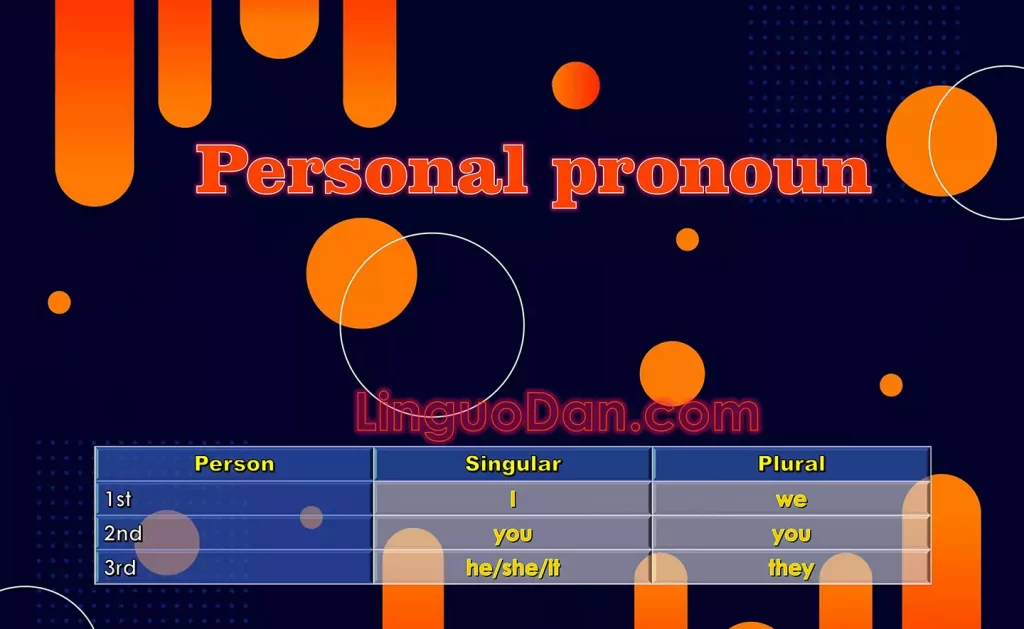English personal pronouns

Personal pronoun are pronouns that indicate an object, but do not name it. Personal pronouns include the following words: І, he, she, it, we, you, they etc.
The personal pronouns have two cases
The personal pronouns have two cases: the nominative case and the objective case
| Nominative | Objective |
|
|
The objective case of the pronouns I, he, she, we is expressed by suppletive forms. In colloquial speech me, not I is commonly used as a predicative:
- Who is there ? – It is me
The pronouns of the third person he, she, it distinguish gender. Male beings (man, father, uncle, boy, etc.) are referred to as he; female beings (woman, mother, aunt, girl, etc.) are referred to as she; inanimate things (house, tree, cap, etc.) are referred to as it).
Forms of personal pronouns
There are three personal pronouns, and each has a singular and a plural form
| Person | Singular | Plural |
| 1st | I | we |
| 2nd | you | you |
| 3rd | he/she/it | they |
Use of the pronoun it
The pronoun it is used to indicate things, names of non-beings, animals and plants, as well as the noun baby, situation or thought:
- I found a box. It was made of wood
The pronoun I is always capitalized. The pronoun you has different meanings – depending on the content
When talking about an unknown person, the pronoun it is also used:
- Did someone visit you? — It was Jane
It is used when talking about time, distance and weather:
- It’s five o’clock
- It’s forty miles from here to London
It is used as a formal subject in impersonal sentences both with an indefinite form of the verb (to-infinitive) and with a subordinate clause that begins with that:
- It is nice to see you
- It’s a pity (that) you cannot sing
Examples of personal pronouns
| Nominative | Objective | |
| I/ME |
|
|
| WE/US |
|
|
| YOU/US |
|
|
| НЕ,SHE,IT/ HIM, HER, IT |
|
|
| THEY/THEM |
|
|